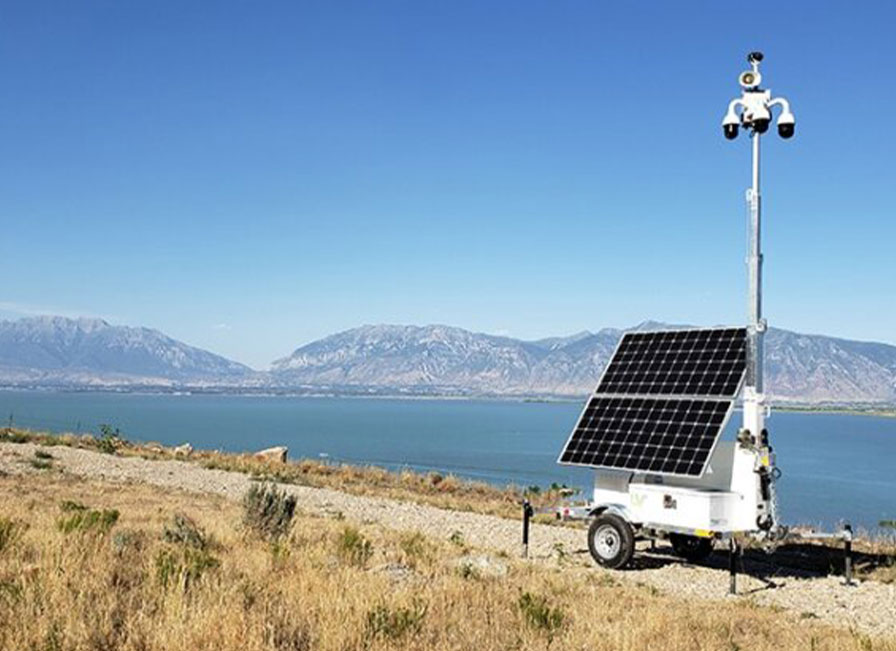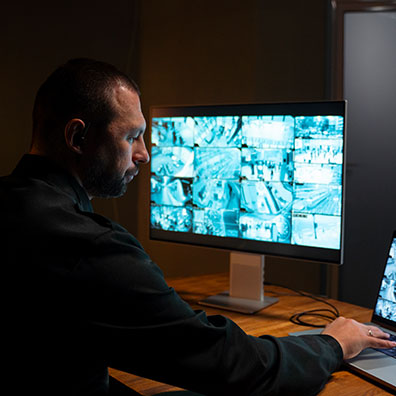When a site has no fixed power, no walls, and no time to waste, a mobile security trailer steps in as a fast, practical fix. It is a towable unit with cameras, lights, and communications gear that you can park where risk is highest. Construction yards, pop-up events, remote lots, and disaster zones all use them to watch activity, record evidence, and deter trouble. Because the trailer is self-contained, you avoid trenching cables or waiting for permits. Setup can happen the same day, and the gear can move as the site changes. This blog explains what these trailers include, how they work, and when they make the most sense for your project or property.
What a Trailer Is
A mobile security trailer is a rugged, tow-ready platform that carries a small control room on wheels. Inside the weather-sealed cabinet sits the recorder, power system, and network gear. A telescoping mast—often 15–30 feet—raises cameras and lights above vehicles, fences, and crowds. Most units arrive pre-wired, so you attach a hitch, position the trailer, level the jacks, and extend the mast. The steel frame resists wind and tampering, while lockable panels protect electronics. Many trailers include a siren and strobe to warn intruders. The result is a portable security post that you can reposition as job phases change, or redeploy to new sites without rebuilding infrastructure.
Core Hardware Features
The trailer’s value rests on its hardware mix. Common, useful features include:
- Cameras: Fixed, panoramic, and PTZ (pan-tilt-zoom) models, often 1080p–4K.
- Lenses: Varifocal lenses (e.g., 2.8–12 mm) to tune the field of view.
- Illumination: LED floodlights or IR for low-light video without glare.
- Mast: Crank or powered lift, 15–30 ft, with guy-wire anchors for wind.
- Housing: IP66/67 enclosures to resist rain and dust.
- Recorder: NVR with SSD/HDD storage; hot-swap bays for quick service.
- Audio: Two-way talk-down speaker for live voice warnings.
These parts create a system that can watch wide areas, zoom in on details like plates or badges, and keep recording through bad weather and busy nights.
Power and Uptime Options
Power is the main challenge at temporary sites. Trailers solve it with layered options:
- Solar: Arrays from ~300–1200 W feed MPPT charge controllers for efficient charging.
- Batteries: Sealed AGM or LiFePO₄ packs, often 2–10 kWh, sized for nights and clouds.
- Generator: Auto-start as backup; 1–3 kW units recharge banks during long overcast.
- Shore Power: If available, connect 120 VAC to bypass fuel use.
Typical runtimes vary by camera count and lighting. A three-camera trailer with IR and a 600 W solar array may run for days on a 5 kWh battery in summer. Smart power boards shed loads, turning off floods first while keeping cameras online. Remote telemetry shows volts, amps, and state of charge, so you can plan service before downtime occurs.
Cameras and Analytics
Cameras do more than record. Modern trailers ship with analytics that spot people and vehicles with higher accuracy than basic motion detection. Useful options include:
- Human/vehicle classification to reduce false alerts from shadows or pets.
- PTZ auto-tracking that follows a person across the scene.
- Thermal cameras for long-range spotting in fog, dust, or at night.
- License plate capture with dedicated angles and shutter settings.
- Audio talk-down where a live agent can say, “You’re on the lot—security is watching.”
For clear results, set target pixel density (e.g., 60–80 pixels/ft for identification) and keep camera heights and angles consistent. Good aim and focus matter more than adding more cameras.
Connectivity and Control
A trailer is only useful if you can see it. Connectivity options include LTE/5G, point-to-point radio, and satellite for very remote work. A typical setup uses:
- LTE/5G router with dual SIM failover and external high-gain antennas.
- VPN tunnel for secure remote access to the NVR and camera streams.
- AES-256 encryption on links and storage, with role-based user accounts.
- Bandwidth shaping to send alerts first, then low-bitrate clips, then archives.
Most platforms support cloud viewing via web or mobile apps, health pings, and instant alerts. With smart rules, you get a snapshot and 10–30 seconds of video when a person enters a zone after hours, rather than a flood of messages for every branch that moves.
Situations Where They Shine
Use a mobile security trailer when you need fast, visible coverage without building a permanent system:
- Construction sites: Protect tools, copper, and machines during off-hours.
- Retail overflow lots: Watch vehicles and reduce late-night dumping.
- Events and festivals: Keep an eye on entry lanes, ticket lines, and cash tents.
- Critical repairs: Guard crews and gear at storm or utility work zones.
- Vacant properties: Deter trespass and capture evidence without staff on site.
- Remote yards: Monitor fuel storage, generators, and gates far from mains power.
In each case, the trailer acts as a flexible guard post that can move with the risk and scale up or down as activity changes.
Setup and Deployment Steps
A solid deployment begins with a quick site plan:
- Survey: Map high-value areas, fence lines, and likely intrusion paths.
- Place the trailer: Choose firm ground with clear sky for solar and a wide view.
- Mast and cameras: Level jacks, extend mast, set heights, tighten guy wires.
- Aim and focus: Use live view at night and day to fine-tune sharpness.
- Rules and zones: Create alert schedules, mask roads/trees, and set dwell timers.
- Proof test: Walk-through tests confirm detection range and audio volume.
Document these settings in a simple checklist. Good notes help when a trailer moves to phase two of a project or a new site with similar risks.
Cost and Procurement Basics
Budgets vary, but a few patterns help with planning:
- Rental vs. purchase: Rentals work for short jobs (weeks to months). Buying fits multi-year use or a fleet model.
- Monthly costs: Expect a combined fee for the trailer, monitoring, and data plan.
- Fuel and service: If using a generator, add fuel drops and periodic oil changes.
- Storage: Onboard drives hold 7–30+ days; cloud adds off-site backup.
- Insurance: Ask about coverage for theft or weather damage to the unit.
Compare proposals by total monthly cost over the full project timeline, including delivery/pickup, data overages, and any live monitoring charges. That gives a fair view of the real price you will pay.
Compliance, Safety, and Privacy
Even temporary systems should follow simple, fair rules:
- Signage: Post clear “Video Surveillance in Use” notices at entries.
- Privacy zones: Mask windows, sidewalks, or public roads not part of your site.
- Retention: Keep footage only as long as policy or contract requires.
- Access control: Use unique logins, 2FA, and least-privilege roles.
- Lighting: Aim floods downward to avoid glare and respect nearby homes.
- Safety: Lock panels, lower the mast in high winds, and chock wheels.
These steps help your team gather useful evidence, reduce complaints, and maintain trust with neighbors and staff.
When a Trailer Is Right
Choose a mobile security trailer when you need speed, flexibility, and visible presence more than a fixed install. It suits sites that move, change, or lack power. The hardware is tough, the power system is designed for uptime, and the links let you view and respond from anywhere. With a short checklist—place, level, extend, aim, and test—you can cover the areas that matter most and adjust as the site evolves. If you are planning a project and want help picking camera types, power sizes, or a monitoring plan that fits your schedule, reach out to a trusted provider such as PCI Audio-Video Security Solutions.


